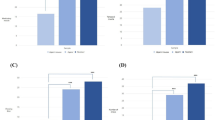Abstract
The masticatory ability of 15 nondysphagic volunteers with complete natural dentition was tested using different chewing parameters including preparation of a two-color plastic chewing gum (bolus shape, and color mixture), particle reduction of a piece of silicone, and number of strokes before swallow of almonds. The tests were performed under conditions of normal salivation and experimental oral dryness caused by intramuscular injection of methylscopolamine. The chewing gum tests as well as the silicone particle reduction tests were not influenced by lack of salivation. The number of chewing strokes prior to the initiation of swallowing of almonds was significantly increased. Oral dryness seems to cause accumulation of particles in the oral cavity from friable food and the particulate material is not transported posteriorly into a “readyto-swallow” positioning. The absorption of saliva by dry oral content such as an almond further impaired oral manipulation of food.
Similar content being viewed by others
References
Bertram U: Xerostomi.Odontologi 77, Munksgaard: Copenhagen, 1977, pp. 31–42.
Sreebny LM, Valtini A: Xerostomia. A neglected symptom.Arch Intern Med 147: 1333–1337, 1987
Sessle BJ: How are mastication and swallowing programmed and regulated. In Sessle BJ, Hannam AG (eds):Mastication and Swallowing. Toronto: University of Toronto Press, 1976, pp 161–171.
Lucas PW, Luke DA: Is food particle size a criteria for the initiation of swallowing?J Oral Rehab 13: 127–136, 1986
Sonies BC, Ship JA, Baum BJ: Relationship between saliva production and oropharyngeal swallow in healthy, differentaged adults.Dysphagia 4: 85–89, 1989
Edlund J, Lamm CJ: Masticatory efficiency.J Oral Rehab 17: 123–130, 1980
Ericsson Y: Clinical investigation of the salivary buffering action.Acta Odontol Scand 17: 131–165, 1959
Fox PC, van der Ven PF, Sonies BC, Weiffenbach JM, Baum BJ: Xerostomia: evaluation of a symptom with increasing significance.J Am Dent Assoc 110: 519–525, 1985
Ettinger R: Xerostomia: a complication of aging.Aust Dent J 26: 365–371, 1981
Bates JF, Stafford GD, Harrison A: Masticatory function—a review of the literature III. Masticatory performance and efficiency.J Oral Rehab 3: 57–67, 1976
Gunne HSJ: Masticatory efficiency and dental state.Acta Odont Scand 43: 139–146, 1985
Ericsson Y, Hardwick L: Individual diagnosis, prognosis and counselling for caries prevention.Caries Res 12 (Suppl 1): 94–102, 1978
Heintze U, Frostell G, Lindgärde F, Trell E: Secretion rate and buffer effect of resting and stimulated whole saliva in relation to general health.Swed Dent J 10: 213–219, 1986
Henricsson V, Svensson A, Axell T: Device for measuring dryness of the oral mucosa.Scand J Rheumatol Suppl 61: 190–193, 1986
Månsson I, Sandberg N: Salivary stimulus and swallowing reflex in man.Acta Otolaryngol 79: 445–450, 1975
Author information
Authors and Affiliations
Rights and permissions
About this article
Cite this article
Liedberg, B., Öwall, B. Masticatory ability in experimentally induced xerostomia. Dysphagia 6, 211–213 (1991). https://doi.org/10.1007/BF02493529
Issue Date:
DOI: https://doi.org/10.1007/BF02493529




